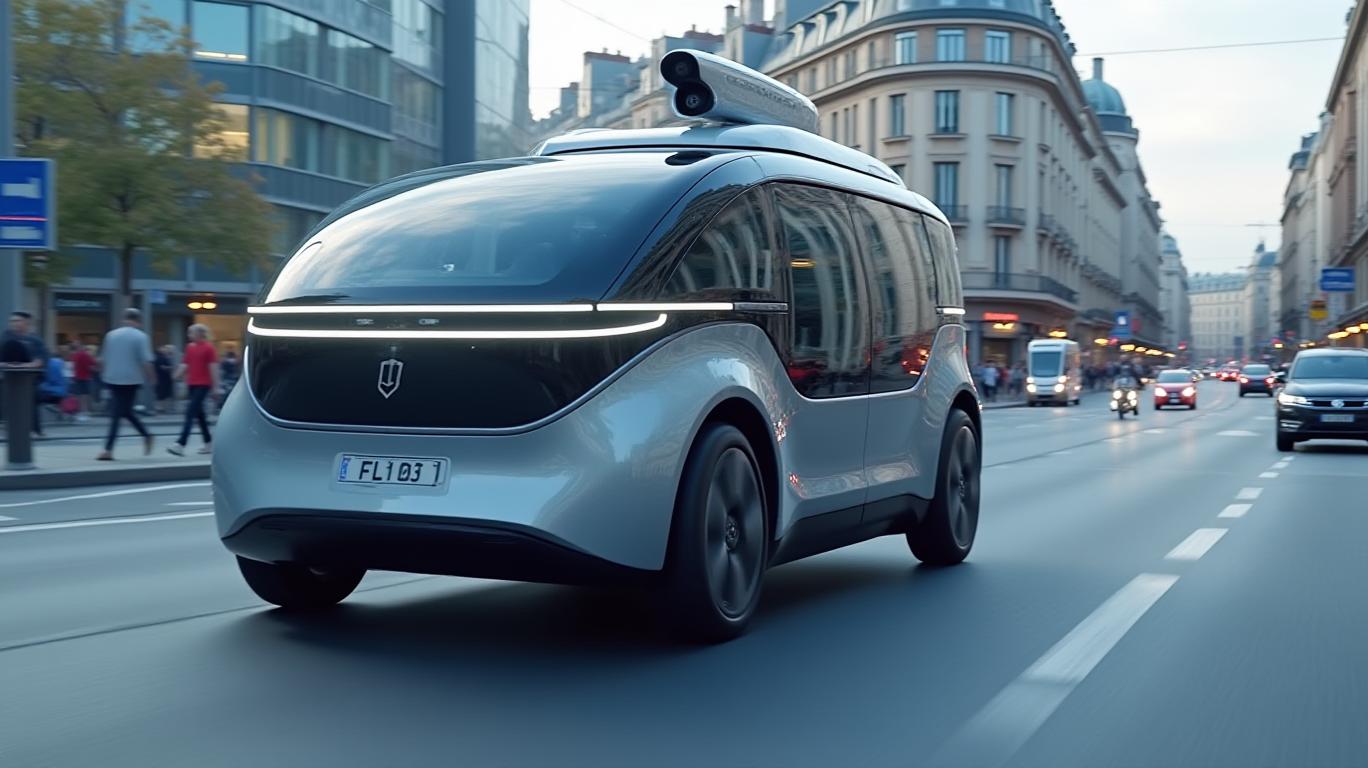Why Uber's Autonomous Vehicle Push Could Be the Catalyst for a Stock Surge
The autonomous vehicle (AV) revolution is no longer a distant promise—it's unfolding at breakneck speed, and
is positioning itself at the epicenter. With a series of strategic partnerships announced in 2025, the company is transforming its core business model, shifting from a ridesharing platform to the “operating system for autonomous mobility.” For investors, this pivot represents a rare opportunity to capitalize on a sector poised to redefine transportation, while Uber's diversified partnerships and global scale create a moat against rivals.The Strategic Masterstroke: Partnerships as a Path to Dominance
Uber's recent collaborations—spanning firms like WeRide, Pony.ai, Momenta, and Volkswagen—highlight a deliberate strategy to avoid the costly and risky path of in-house AV development. Instead, it's leveraging its logistical expertise and global platform to integrate cutting-edge autonomous technologies developed by partners. This “platform-as-a-service” model reduces R&D risks while accelerating deployment timelines.
Key partnerships to watch:
- WeRide Expansion: Adding 15 cities globally by 2030, with a focus on Europe and the Middle East.
- Pony.ai's Middle East Launch: Deploying Robotaxis in a major market by late 2025, with safety operators initially onboard.
- Momenta's European Rollout: Slated for early 2026, combining Uber's scale with Momenta's AI-driven “flywheel” data system.
- Volkswagen's U.S. Push: Autonomous ID. Buzz AD vehicles hitting Los Angeles in 2026, backed by MOIA's fleet management software.

Global Reach Meets Regulatory Agility
Uber's partnerships aren't just about technology—they're about regulatory compliance at scale. Companies like WeRide and Momenta already hold driverless permits in critical jurisdictions (e.g., France, Singapore, and the UAE), enabling Uber to bypass the time-consuming process of securing approvals alone. This regulatory “leg up” is a critical competitive advantage, as AV deployment timelines often hinge on bureaucratic hurdles.
Meanwhile, the Middle East—where Uber has already secured early wins—serves as a testing ground for a fully autonomous future. The region's progressive policies and high urbanization rates make it ideal for scaling Robotaxi services, with lessons learned easily transferable to Europe and Asia.
AI-Driven Efficiency: The Margin Game
While Uber's AV push grabs headlines, its real edge lies in operational efficiency. By outsourcing AV tech development to partners, Uber can focus on its core strengths: fleet management, customer experience, and data optimization. This lean approach reduces costs and allows the company to mobilize capital toward high-growth markets, rather than sinking it into R&D.
Moreover, autonomous fleets eliminate labor costs, which currently account for a significant portion of Uber's expenses. Once fully autonomous vehicles dominate its network, margins could expand dramatically, creating a powerful tailwind for valuation.
The Tesla Threat—and Why Uber Might Win
Tesla's Austin-based robotaxi service, set to launch in 2025, is often cited as a direct competitor. But Uber's multi-partner ecosystem offers a key advantage: diversified technology and global reach. While Tesla bets on proprietary tech and vertical integration, Uber's partnerships allow it to tap into varied AV solutions tailored to specific regions. This “best-of-breed” strategy could accelerate adoption faster than Tesla's singular approach.
Valuation Catalysts on the Horizon
The next 12–18 months will be pivotal. Key catalysts include:
1. Late 2025: Pony.ai's Middle East pilot launches, showcasing real-world demand and cost structures.
2. Early 2026: Momenta's European rollout tests scalability in a complex regulatory environment.
3. 2026 U.S. Launch: Volkswagen's ID. Buzz AD vehicles could attract regulators and consumers alike, leveraging the brand's credibility.
These milestones could reposition Uber from a “growth at all costs” tech company to a profit-driven mobility giant, justifying a valuation uplift.
Conclusion: A Paradigm Shift with Near-Term Payoffs
Uber's AV strategy isn't just about the future—it's about owning the present. By leaning on partnerships, prioritizing global expansion, and leveraging AI-driven efficiency, the company is building a moat that could make it the default gateway for autonomous mobility. For investors, the pieces are falling into place: a scalable model, regulatory tailwinds, and a path to margin expansion.
The question isn't whether AV will disrupt transportation—it's who will profit first. With its platform, partnerships, and execution, Uber is primed to lead the charge. Investors who act now may secure a seat at the table of one of the 21st century's most transformative industries.
The time to position for this shift is now.

Comments
No comments yet